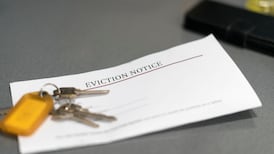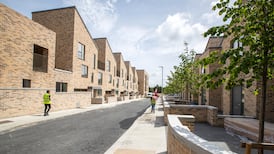IRAN: Iran has rejected a request by UN nuclear inspectors to return to its Parchin military base, where Washington suspects Tehran might have conducted tests linked to nuclear bomb-making, the UN atomic watchdog said.
Several months after their initial requests, UN inspectors were in January allowed by Iran to visit Parchin.
During this visit, inspectors told Iranian officials they would like to visit an area not covered in that inspection, the agency said.
The deputy head of the International Atomic Energy Agency, Pierre Goldschmidt, quoted Iran's response in a speech to the agency's board as saying: "The expectation of the [ IAEA] in visiting specified . . .points in Parchin complex are fulfilled and thus there is no justification for an additional visit."
Iran has repeatedly said its nuclear intentions are limited to the peaceful generation of electricity
However, Washington accuses it of using its nuclear programme as a cover to build an atomic bomb.
Iran is not required to allow the IAEA into sites like Parchin, where there is no clear sign of nuclear activities.
But western diplomats on the IAEA board said permitting agency inspections at such sites was crucial to building confidence that Tehran's nuclear plans are as peaceful as it insists.
Mr Goldschmidt said Tehran had "facilitated in a timely manner agency access to nuclear materials and facilities" as required under the IAEA safeguards agreement and the additional protocol allowing more intrusive, short-notice inspections.
Iran's senior delegate to the IAEA meeting, Sirus Naseri, said the fact the agency had been allowed into a secure military complex like Parchin at all was itself significant.
"The mere fact that Iran has in the context of transparency provided such access is a matter that is significant and should be considered in that context," Mr Naseri said.
The IAEA has been investigating reports that between 1989 and 1998 a research centre in Tehran called Lavizan had acquired so-called dual-use materials and equipment that could be used to enrich and convert uranium, processes that can be used in either military or civilian nuclear work.
Mr Goldschmidt said the agency had asked Iran for information on this issue, but Tehran's response was that it had no obligation to share this information with the IAEA.
Satellite images showed last year that the Lavizan site had been razed.
Mr Goldschmidt also said a December visit to a uranium conversion plant at Isfahan had "revealed extensive underground excavation activities which Iran had failed to report in a timely manner to the agency as required".
This excavation was the digging of a tunnel under the Isfahan plant, which Iran has said could be used to store equipment for protection in case of US or Israeli attack.
In September, the IAEA board of governors passed a resolution calling on Iran "as a further confidence-building measure, voluntarily to reconsider its decision to start construction of a research reactor modified by heavy water".
Heavy-water reactors can be used to produce significant amounts of bomb-grade plutonium, which can then be extracted from the spent fuel.
Mr Goldschmidt said Iran was forging ahead with plans for the reactor.
"Iranian officials have indicated that the heavy-water research reactor project is progressing," he said.







